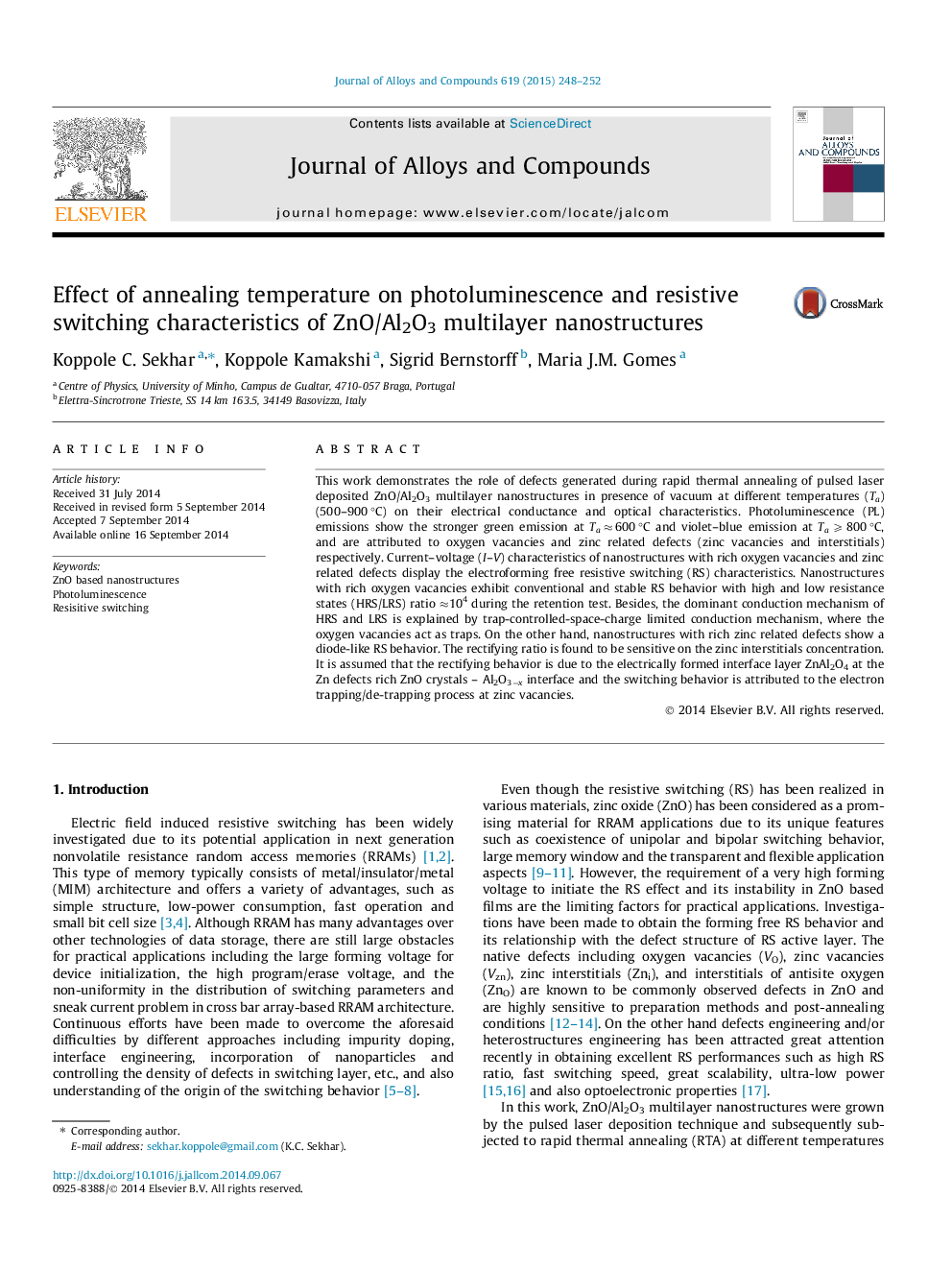| Article ID | Journal | Published Year | Pages | File Type |
|---|---|---|---|---|
| 8000525 | Journal of Alloys and Compounds | 2015 | 5 Pages |
Abstract
This work demonstrates the role of defects generated during rapid thermal annealing of pulsed laser deposited ZnO/Al2O3 multilayer nanostructures in presence of vacuum at different temperatures (Ta) (500-900 °C) on their electrical conductance and optical characteristics. Photoluminescence (PL) emissions show the stronger green emission at Ta â 600 °C and violet-blue emission at Ta ⩾ 800 °C, and are attributed to oxygen vacancies and zinc related defects (zinc vacancies and interstitials) respectively. Current-voltage (I-V) characteristics of nanostructures with rich oxygen vacancies and zinc related defects display the electroforming free resistive switching (RS) characteristics. Nanostructures with rich oxygen vacancies exhibit conventional and stable RS behavior with high and low resistance states (HRS/LRS) ratio â104 during the retention test. Besides, the dominant conduction mechanism of HRS and LRS is explained by trap-controlled-space-charge limited conduction mechanism, where the oxygen vacancies act as traps. On the other hand, nanostructures with rich zinc related defects show a diode-like RS behavior. The rectifying ratio is found to be sensitive on the zinc interstitials concentration. It is assumed that the rectifying behavior is due to the electrically formed interface layer ZnAl2O4 at the Zn defects rich ZnO crystals - Al2O3âx interface and the switching behavior is attributed to the electron trapping/de-trapping process at zinc vacancies.
Keywords
Related Topics
Physical Sciences and Engineering
Materials Science
Metals and Alloys
Authors
Koppole C. Sekhar, Koppole Kamakshi, Sigrid Bernstorff, Maria J.M. Gomes,
